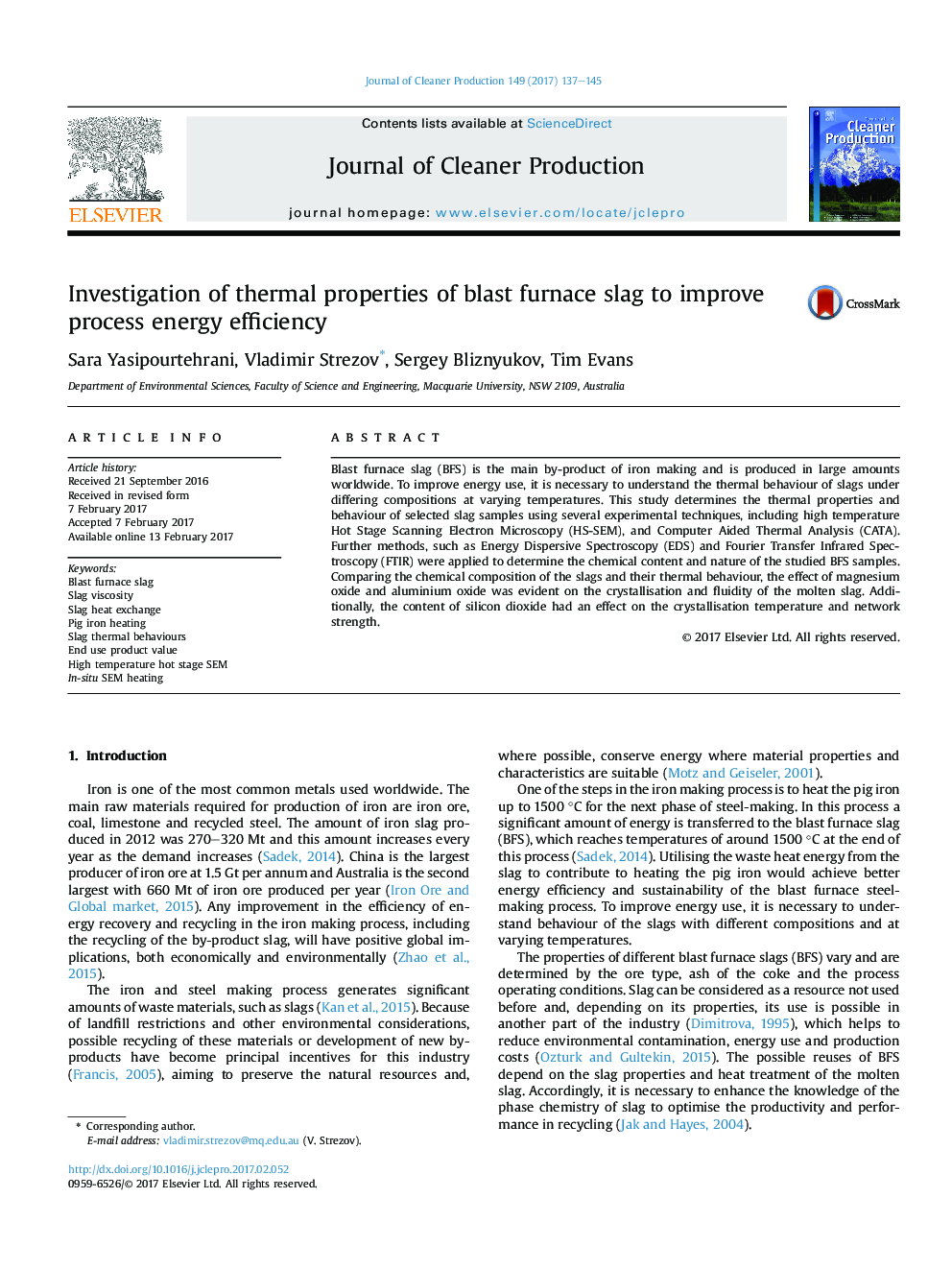| کد مقاله | کد نشریه | سال انتشار | مقاله انگلیسی | نسخه تمام متن |
|---|---|---|---|---|
| 5480720 | 1522104 | 2017 | 9 صفحه PDF | دانلود رایگان |
- Blast furnace slag (BFS) was thermally evaluated for improved process efficiency.
- The BFSs showed different phase after melting and solidification according to the chemical content.
- The BFS basicity has direct effect on its melting point.
- MgO in the crystalline part of the cooled slag was low comparing to the initial amount before heating.
- The samples had exothermic behaviour with waste energy reuse opportunity.
Blast furnace slag (BFS) is the main by-product of iron making and is produced in large amounts worldwide. To improve energy use, it is necessary to understand the thermal behaviour of slags under differing compositions at varying temperatures. This study determines the thermal properties and behaviour of selected slag samples using several experimental techniques, including high temperature Hot Stage Scanning Electron Microscopy (HS-SEM), and Computer Aided Thermal Analysis (CATA). Further methods, such as Energy Dispersive Spectroscopy (EDS) and Fourier Transfer Infrared Spectroscopy (FTIR) were applied to determine the chemical content and nature of the studied BFS samples. Comparing the chemical composition of the slags and their thermal behaviour, the effect of magnesium oxide and aluminium oxide was evident on the crystallisation and fluidity of the molten slag. Additionally, the content of silicon dioxide had an effect on the crystallisation temperature and network strength.
Journal: Journal of Cleaner Production - Volume 149, 15 April 2017, Pages 137-145
